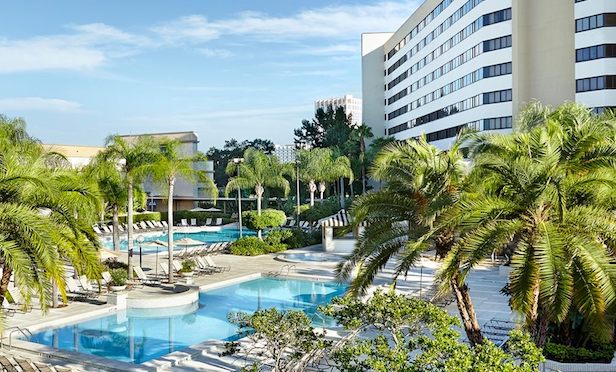
IRVINE, CA—The hotel outlook heading into 2018 is decidedly mixed, judging by Ten-X's latest outlook report on the sector. Although hotel revenues haven't kept up with GDP growth for the past six months, the demand backdrop remains healthy as continued economic expansion pushes consumer spending in the lodging sector to new heights.
Overall, the story is one of deceleration rather than decline. Ten-X notes that occupancies held steady at 65.6% in the third quarter, up just 30 basis points year over year. Citing STR data, Ten-X says that ADRs rose just 0.3% from Q2 and 1.3% from Q3 2016, for the slowest annual growth rate seen this cycle.
At the other end of the spectrum is supply growth. It rose 1.9% Y-O-Y in Q3 for the third consecutive quarter, the fastest annual growth seen this cycle. Conversely, demand rose by 2.4% for the second consecutive quarter.
The mitigating factor of demand growth inching past supply growth is a point made in other recent reports on the sector. Speaking at the Dallas Hotel Conference earlier this month, Daniel Lesser, president of LW Hospitality Advisors, noted that the influx of new supply is “not devastating” overall and that issues stemming from the new construction are submarket based. Lesser cited STR data showing that estimated annual growth in supply for 2017 is 2.0%, with an increase of 2.1% projected for 2018. That compares with 2.6% supply growth seen in 2008, as the previous cycle ground to a halt, and 3.2% in 2009, in the depths of the Great Recession.
And Lodging Econometrics reported recently that the Total '17 forecast for new construction is 979 projects totaling 112,016 keys. That represents a 12% increase over the actual number of hotel openings in 2016, which stood at 850 hotels and 99,881 keys.
“With slight increases in occupancy being recorded, new supply in '17 should be easily absorbed,” according to Portsmouth, NH-based LE. “Demand growth, however modest, still continues to exceed supply growth.” Even in the top 25 markets, which tended to see the heaviest supply growth, occupancies ticked downward by just 10 basis points Y-O-Y to an average of 76.6%, according to Ten-X.
Even so, Ten-X notes that deal volume and pricing both declined in Q3, with the former off slightly less than 5% from Q2 and 45% Y-O-Y. The quarterly drop-off in pricing was somewhat sharper at 6%, although the Y-O-Y decrease was shallower at 7.6%.
“Rising interest rates coupled with cooling fundamentals have tempered investors' zeal for the sector,” according to Ten-X, which accordingly cites a 10-bp quarterly increase in cap rates to 8.7%. That's up 30 bps from a year and 60 bps from the cycle trough.
With that being said, Ten-X notes that its national hotel “heat map” has more gainers than losers, with 10 geographically diverse markets seeing upgrades in their growth outlooks compared to four that saw downgrades. This improved the average market score from 5.04 to 4.91, although that's due in part to Ten-X extending its forecast period to 2021.
For investors seeking opportunities in the hotel sector, Ten-X sees Orlando, Honolulu, Salt Lake City, suburban Maryland and Sacramento as the top “buy” markets. Conversely, the firm recommends that owners with lodging assets in San Jose, Austin, Charlotte, Cleveland or Oakland consider selling them.
Want to continue reading?
Become a Free ALM Digital Reader.
Once you are an ALM Digital Member, you’ll receive:
- Breaking commercial real estate news and analysis, on-site and via our newsletters and custom alerts
- Educational webcasts, white papers, and ebooks from industry thought leaders
- Critical coverage of the property casualty insurance and financial advisory markets on our other ALM sites, PropertyCasualty360 and ThinkAdvisor
Already have an account? Sign In Now
*May exclude premium content© 2025 ALM Global, LLC, All Rights Reserved. Request academic re-use from www.copyright.com. All other uses, submit a request to [email protected]. For more information visit Asset & Logo Licensing.








